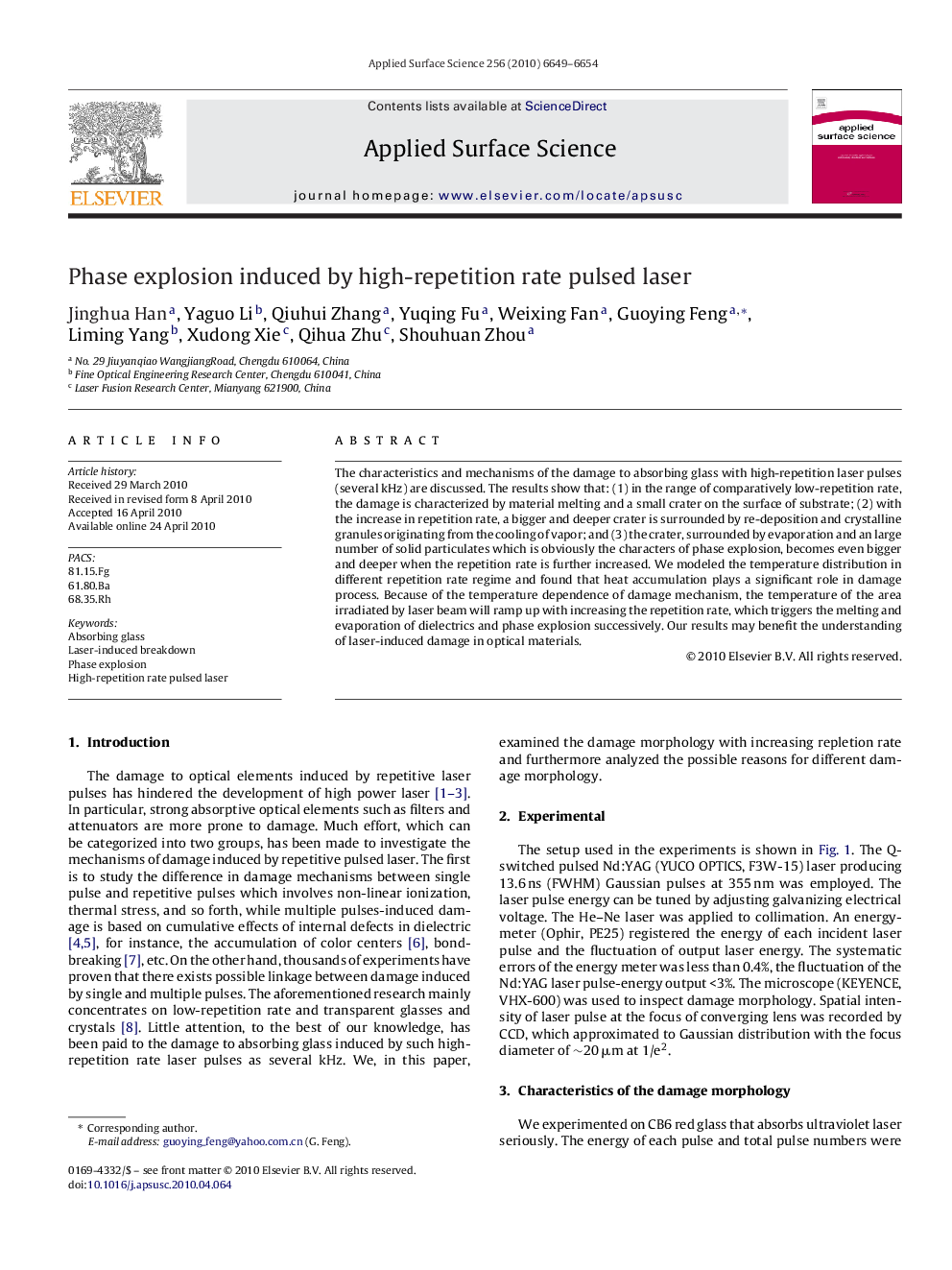| Article ID | Journal | Published Year | Pages | File Type |
|---|---|---|---|---|
| 5365475 | Applied Surface Science | 2010 | 6 Pages |
The characteristics and mechanisms of the damage to absorbing glass with high-repetition laser pulses (several kHz) are discussed. The results show that: (1) in the range of comparatively low-repetition rate, the damage is characterized by material melting and a small crater on the surface of substrate; (2) with the increase in repetition rate, a bigger and deeper crater is surrounded by re-deposition and crystalline granules originating from the cooling of vapor; and (3) the crater, surrounded by evaporation and an large number of solid particulates which is obviously the characters of phase explosion, becomes even bigger and deeper when the repetition rate is further increased. We modeled the temperature distribution in different repetition rate regime and found that heat accumulation plays a significant role in damage process. Because of the temperature dependence of damage mechanism, the temperature of the area irradiated by laser beam will ramp up with increasing the repetition rate, which triggers the melting and evaporation of dielectrics and phase explosion successively. Our results may benefit the understanding of laser-induced damage in optical materials.
